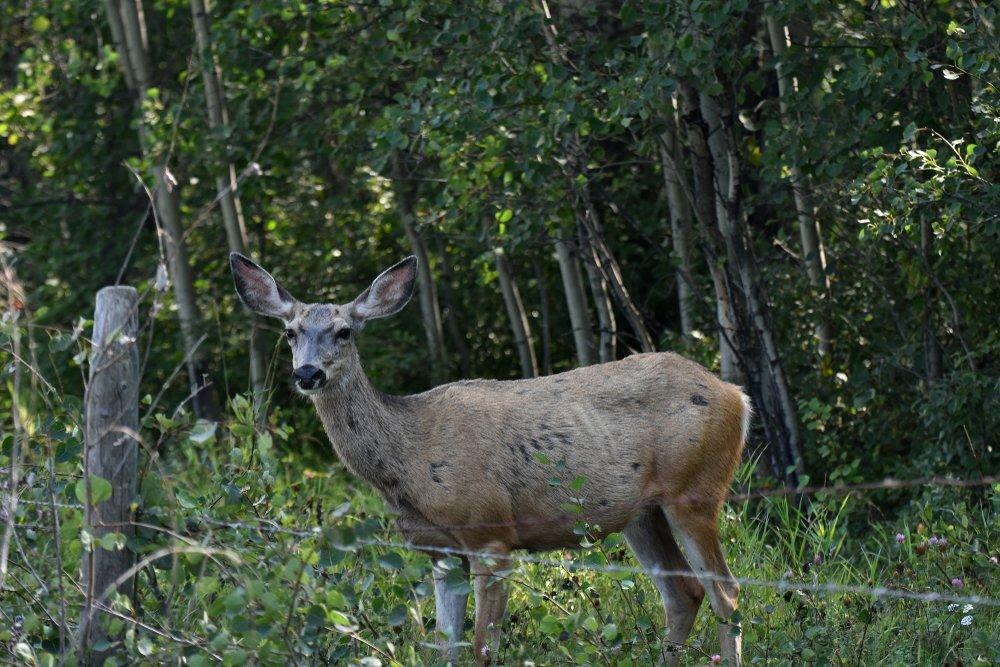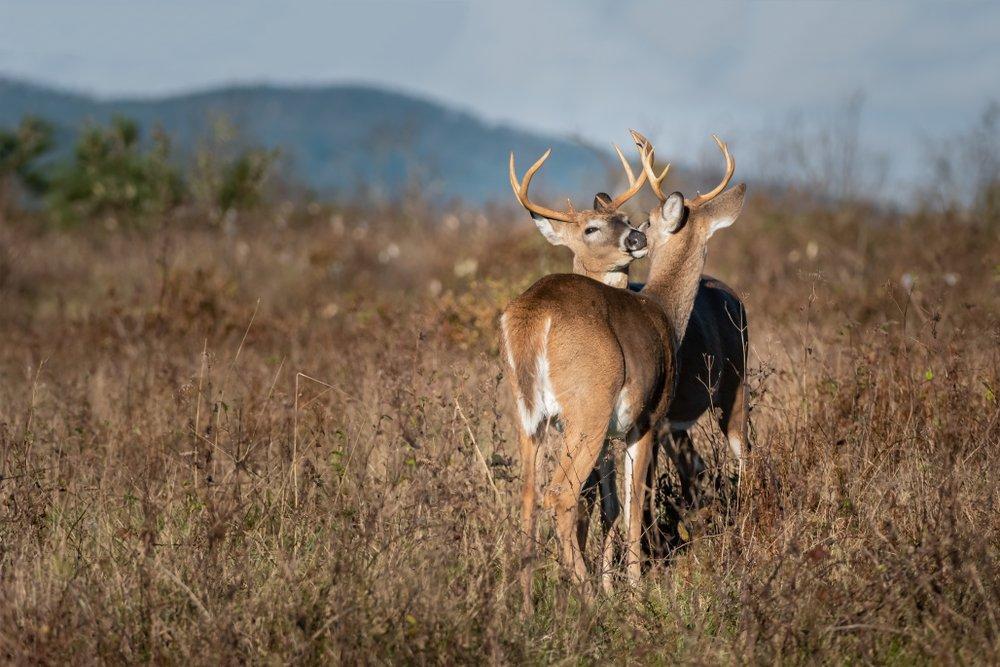And What We Still Don't
Chronic Wasting Disease (CWD) continues to worry deer biologists, managers and hunters across the country. It isn't going away. It's only getting worse.
Many people aren't aware of CWD, or simply don't understand the full breadth of the threat it poses. Most researchers believe CWD is caused by an abnormal protein referred to as a prion. Once contracted, it is an always-fatal disease that thrives in the nervous system of cervids (deer, elk, reindeer and moose). It can be passed on through saliva, urine, feces, spinal and brain fluids, etc. Similar diseases affect other animals such as Bovine Spongiform Encephalopathy (BSE) which is also referred to as Mad Cow Disease. It's also found in sheep, known as Scrapie. Interestingly enough, we already know that Creutzfeldt-Jakob Disease (CJD) — a sister disease to BSE and CWD — is capable of infecting humans.
That aside, you might have heard the recent claims, or read the headlines, that said a cure for CWD has been found. Well, technically a cure hasn't been found, yet. But one former Louisiana State University neuropathologist, Dr. Frank Bastian, believes he's on the right road to discovering it. And all due to his belief in his research that points to spiroplasma — and not prions — as the causative agent of CWD. In other words, he believes CWD is caused by bacteria — not malformed proteins.
The point is that we have really shown that the bacterium is involved in this disease, Bastian said. In that sense, the door has been swung open in being able to start to control this. The big thing that's happened to me is I've been able to grow (the CWD bacterium). I was dead in the water if I couldn't grow it. I can now characterize it. I can get it in self re-culture. I can develop anti-bodies to it. I can develop tests and vaccines. This is going to be a big difference for the hunting industry.
My question to hunters — you see a deer, you shoot it, how do you know it's not sick, or if it has CWD? Bastian asked. There's no way to tell, because basically, the 18-month incubation period during that time, they're totally normal in appearance. So, you need a test — an instant test. My plan is to do that with a pocket test, something with an immunological reaction to the bacterium. That's on the horizon. Basically, what you'd do is take a drop of blood, put it on the test and if it's positive, don't even dress it. If it's negative, I wouldn't worry about it.
The real question, though, is how does this help wild deer? Many believe it would virtually be impossible to administer vaccines to wild cervids. And if Bastian's claims are correct, there are still many factors that must be considered. Darrel Rowledge with Preventative Safety Research, Inc., made those thoughts known.
While there are, or could be, some interesting aspects and findings underlying Bastian's work, there are also some very significant challenges, Rowledge said. Vastly more important, in practical terms the notion or role of bacteria is distinction without difference. If true — nothing about Bastian's conjecture changes the need to contain the spread of the pathogen. It does nothing to change the enormous costs, debt, and deepening deficit of CWD. It does nothing to change the massively destructive costs of privatizing and commercializing wildlife. It does not change the fact that there are dozens of pathogens and parasites that are amplified by captivity and commercialization. It does not change the attack on genetic integrity and diversity, or the fact of genetic manipulation and pollution driven by market preferences. It does not change the reality of habitat/biodiversity loss, fragmentation, and ecosystem disruption instantly imposed by captivity. It cannot change the perversity of (unfettered) short term profit forces inclined to dominate over public interest. It does not reverse the disconnection of people from wild species and the natural landscapes that produce and protect them. It does not change the fact of evolving pathogens in evolving landscapes, or the absurdity of trying to find band-aids and cures rather than designing policy to stop fostering, incubating, and spreading them.
Despite Bastian's research, overall, there are many leading research authorities who don't completely agree with his findings. The Quality Deer Management Association (QDMA), among others, recently came out with a response to Bastian's work.
Chronic wasting disease (CWD) is caused by prions, and the scientific evidence is overwhelming, QDMA said. While it's important to explore all potential solutions to this serious challenge, the spiroplasma theory is not new and has been thoroughly examined for years without verification. Nothing could be better news for deer hunters than the discovery of a cure for CWD, but the recent promises that a cure is coming soon have no basis in confirmed science. For now, we must all remain focused on preventing the spread of CWD to new areas.
The National Deer Alliance (NDA) also had a response.
Please consider the following research, which is related to the claim currently receiving a good deal of publicity that spiroplasma bacteria are the causative agents of transmissible spongiform encephalopathies (TSEs) like chronic wasting disease (CWD), NDA said. We are encouraged that researchers continue to seek answers about this very complicated disease and are hopeful that what is learned can help us make prudent decisions about how to manage it for the long-term health of wild deer, hunting, and industry.
Artificially synthesized prions have shown to be capable of causing prion disease. To rule out the role of unidentified substances as disease causative agents in samples of infectious tissues, researchers successfully created a clean synthetic version of the scrapie prion that was capable of infecting mice.
The NDA pointed to several studies and their findings.
Research claiming that bacteria are the causative agents of transmissible spongiform encephalopathies has never been reproduced despite extremely rigorous attempts to do so. In blind studies done by the University of Maryland School of Medicine, samples of brain material infected with scrapie, along with uninfected samples, were searched for Spiroplasma spp. and other common bacteria and bacteria-like structures using Polymerase Chain Reaction (PCR) amplification (PCR is a method widely used in molecular biology to make many copies of specific DNA segments). Researchers found no evidence that any eubacterium, including spiroplasma or any other bacteria type, was consistently associated with scrapie-infected brain tissue, thus concluding that the agent responsible for TSE disease cannot be a spiroplasma or any other eubacterial species. — Source: Absence of Spiroplasma or Other Bacterial 16S rRNA Genes in Brain Tissue of Hamsters with ScrapieIrina Alexeeva, Ellen J. Elliott, Sandra Rollins, Gail E. Gasparich, Jozef Lazar, Robert G. RohwerJournal of Clinical Microbiology
An extensive research project completed at Louisiana State University on the potential roles of spiroplasma in transmissible spongiform encephalopathies found that following inoculation of spiroplasma mirum into neonatal goats and 5-month-old white-tailed deer, none of the animals developed clinical signs or pathology seen in transmissible spongiform encephalopathies. In this study, the bacteria were introduced to the animals intracerebrally, intravenous, or intradermally. Additionally, researchers conducting this study tested three species of Spiroplasma and found that they were susceptible to minimal dilutions of common laboratory disinfectants as well as heat sterilization of only 250°F for 15 minutes. In a wide array of other studies, samples of transmissible spongiform encephalopathy-infected material treated with similar sterilization methods were shown to remain infectious; thus, indicating that other factors not related to bacteria result in the transmission and/or persistence of the disease. — Source: French, Hilari Maree, "Characterization of Spiroplasma mirum and its role in transmissible spongiform encephalopathies"
Nearly all experimental examination of TSE-causing agents point to proteins at the infectious agent. The hallmark study of the prions' role in transmissible spongiform encephalopathies was conducted by Dr. Stanley Prusiner who demonstrated that after adding enzymes that destroyed DNA and RNA to scrapie-infected brain material, the material remained infections. These enzymes would have damaged or destroyed bacteria present in the samples. However, when he added protein-neutralizing enzymes to the scrapie-infected brain material, it's infectivity plummeted. Thus, he demonstrated that the causative agent of the disease was most likely protein based, not bacterial-based. It should be noted that Prusiner's work earned a Nobel Prize due to its rigor and reproducibility by other researchers. — Source: Prusiner SB. (1982). Novel proteinaceous infectious particles cause scrapie. Science.
Dr. Bastian pointed to both his own research and colleagues' findings to support his belief. Of which seem to suggest this isn't just a problem for cervids, but that it could possibly be transmissible to humans.
I know there has been some controversy in regard to transmission to sub-human primates, Bastian said. Creutzfeldt-Jakob Disease (CJD), the human form [of CWD], usually affects between 40 and 80 years of age, right in the prime of your life. It's an infection. How they discovered the problem in England is, all of a sudden, they could start to see the disease in teenagers, suggesting a more virulent form of the organism. And in fact, pathologically, there are changes that support that they were associated with a more virulent form of mad cow disease. Well, if you look at CJD in the western states, where CWD is prevalent, you start to see 20-year-olds come down with CJD. That's worrisome. And why it's worrisome is the pathology of CWD closely resembles mad cow disease, suggesting it's a more virulent form of the transmissible agent. But I think that will be worked out when they start studying the bacteria properly.
Bastian also believes there's a possibility that bacteria associated with CWD, and more directly, CJD, are linked to Parkinson's and Alzheimer's.
There has been a study that's shown — and I wasn't involved in it — but point being is that they showed that spiroplasma, just the laboratory strain, in tissue culture will induce alpha synuclein, which is a protein associated with Parkinson's disease, Bastian continued. But also, there's a great deal of interest in bacterial infections causing Alzheimer's disease.
Still, some sources are seemingly caught in the middle as to how they believe. This is what one unnamed source had to say.
Over the years, there have been numerous studies exploring the potential role of spiroplasma bacteria in CWD transmission and persistence. At best, that body of research is inconclusive and contradictory. Dr. Bastian's work and theories (which have been around for many years) have yet to be replicated by the scientific community, despite many attempts to do so. That does not mean, however, that spiroplasma or other unknown factors don't play some role in CWD transmission beyond that of prions.
Bryan Richards with the USGS also had interesting input.
The overwhelming majority of peer-reviewed publications (plus a Nobel laureate) support that a mis-folded protein plays a central role in TSE's, as well as other diseases of the ageing, Richards said. Does that rule out some role of spiroplasma? No, but it does suggest that role, if there is one, is not central.

The prion has become a business, Bastian said. They've spent a couple hundred million dollars on this disease. If you aren't working on the prion, you can't get money at all. Those people researching the prion essentially control all of the funding.
Before the CWD epidemic, there was no one who really cared, CJD was considered a rare disease, Bastian continued. If not for the CWD epidemic, my information would have died on the vine. I have a close friend that's a professor at LSU, and he said, well, I'm convinced your absolutely right. But, he said, I think it will be rediscovered 30 years from now. But we have to go in the right direction. That's the problem. We've spent 40-plus years trying to make sense out of the prion theory. And uh, we're going nowhere. There's a tendency to follow the dogma. And that's the problem. The prion group has kicked me out. They haven't attached me. They've ignored me. And that's been very effective.
In conclusion, it's apparent that Bastian stands firm in his findings. And it's clear that many other sources do not agree with him. It's clear we still don't know much about CWD. There's still more yet to learn than what's already been discovered. The takeaway — CWD is a serious issue. And anyone who passes it off as insignificant is wrong.
Several challenges still arise with the big issue of CWD. First, we're met with the challenge of detecting it. We don't fully understand how it mutates (and science has proven that it can mutate). Bastian claims there is a cure, but time will tell. It's killing deer throughout half the country and rapidly spreading. Managing it has been near to impossible. Too many people are brushing it under the rug. And funding we currently have for research, testing and management are pennies in comparison to what's needed to defeat this disease.
We have to look at what is and what was, Rowledge said. Prions are the single greatest challenge left in biology. But what's happening on a large scale is we aren't asking the questions that need to be asked.
Despite those who foolishly brush it under the rug and claim it should be of no concern to you, it is a problem. Listen to the experts. Sift through the data. Think for yourself. But don't just sit back and take someone's word for it. And for those who recognize the threat for what it is, the last thing we should do is grow complacent. There's still a lot we don't know about this disease. But we know enough to realize it's past time to take action.
Don't Miss: Why Chronic Wasting Disease Shouldn't Scare You Away from Deer Hunting
Are you a deer hunter wanting to learn how to accomplish your goals? Check out our stories, videos and hard-hitting how-to's on deer hunting.










